Traded Treasures: Indian Textiles for Global Markets
Known for many centuries as the source of fine cotton and silk textiles, India has produced some of the world’s most innovative textile traditions. Currently on show at The Herbert F. Johnson Museum of Art at Cornell University, ‘Traded Treasure: Indian Textiles for Global Markets’ spans five hundred years of the history of India’s thriving commerce to Southeast Asia, Europe and Japan, revealing why Indian textiles were in demand the world over. Drawn from the collection of Banoo and Jeevak Parpia, the exhibition and catalogue are accompanied by a symposium at the museum on 19 April 2019.
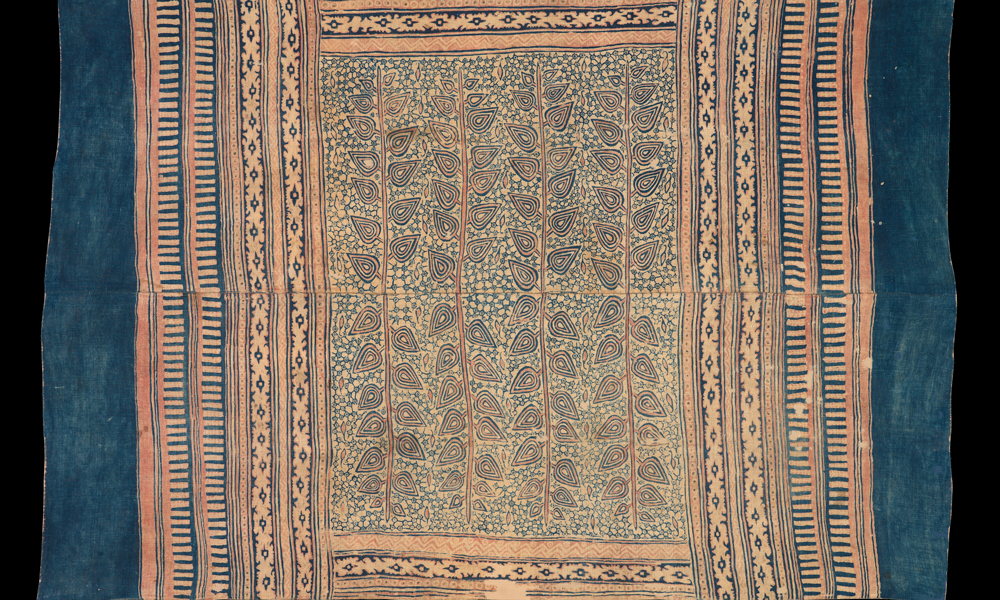
Maa’ ceremonial cloth with design of trees (detail), Possibly 17th century, India, Gujarat, made for the eastern Indonesian market (Toraja). Cotton (plain weave), hand-painted mordant-dyed and resist-dyed, 1.40 x 2.08 m. Collection of Banoo and Jeevak Parpia
Some of the earliest surviving Indian textiles are printed and painted cotton fragments found in Indonesia. Along with silk double-ikat patola, these were used for ceremonial purposes and treasured in Indonesia as heirlooms. The maritime trade that relied on supplying Indian textiles to Southeast Asian markets in exchange for spices was first conducted by Arab, Persian, and Indian merchants but was later dominated by Portuguese, Dutch, and British traders, which expanded the demand for Indian chintz and embroideries in Asia and Europe.
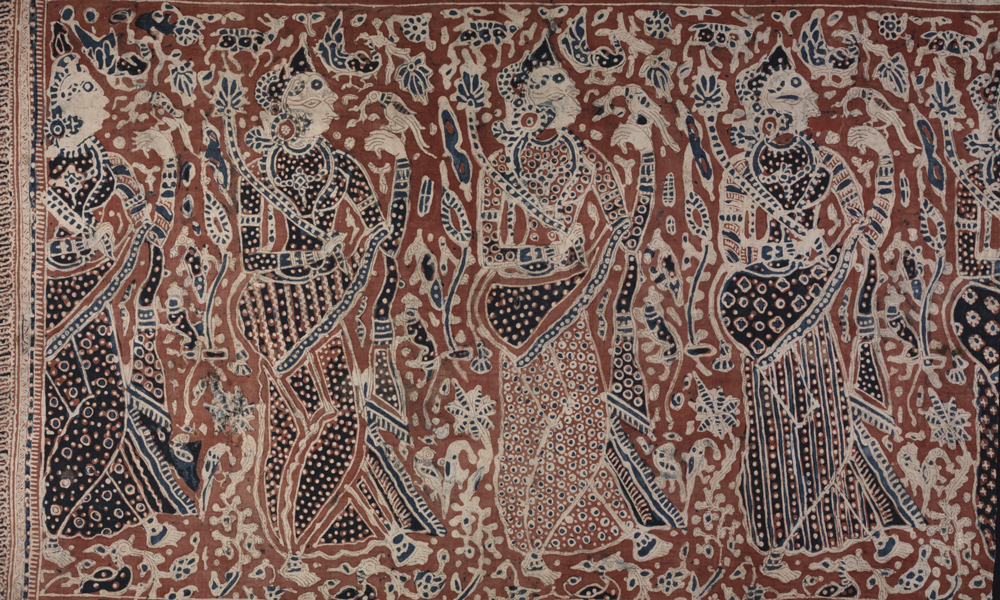
Fragment of a maa’ with design of women holding parrots and flowers (detail). India, Gujarat, made for the eastern Indonesian market (Toraja), 16th century. Cotton (plain weave), hand-painted mordant-dyed and resist-dyed, 0.96 x 1.30 m. Collection of Banoo and Jeevak Parpia.
The textiles presented tell a story of global commerce and the ingenious ways that Indian artisans designed and produced goods of astonishing beauty and technical sophistication, while also revealing how cross-cultural interchange contributed to global aesthetic developments.
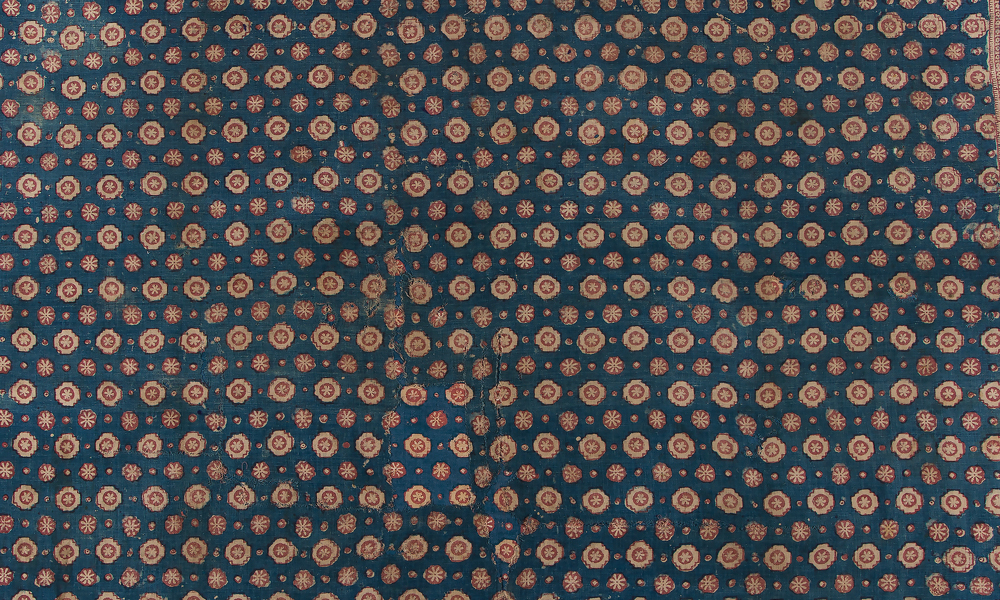
Maa’ ceremonial cloth (detail), India, Gujarat, made for the eastern Indonesian market (Toraja), 17th or 18th century. Cotton (plain weave), block-printed mordant-dyed; block-printed and hand-painted resist-dyed, 2.44 x 1.32 m. Collection of Banoo and Jeevak Parpia.
The exhibition was curated by the Johnson Museum’s chief curator and curator of Asian Art, Ellen Avril, and is supported by a generous gift endowed in memory of Elizabeth Miller Francis. A fully illustrated forthcoming catalogue, with essays by leading experts Ruth Barnes, Kaja McGowan, and Sylvia Houghteling, elucidates the history of the Indian textile trade.
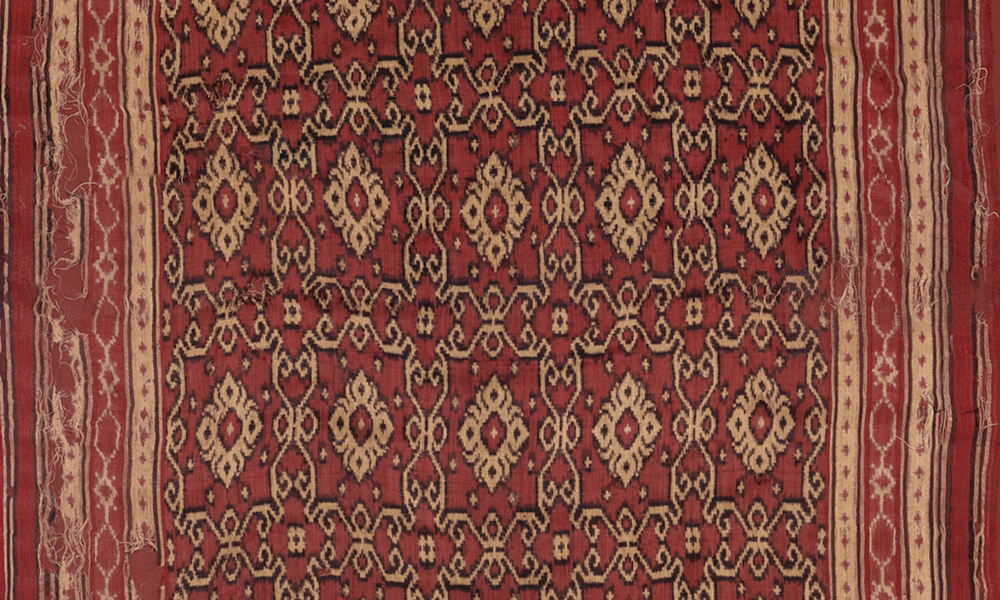
Patola with geometric design (detail), 18th century, India, Gujarat, made for the Indonesian market. Silk, double-ikat, resist-dyed, 2.21 x 0.89 m. Collection of Banoo and Jeevak Parpia.
On Friday 19 April the Johnson will host a daylong symposium that will explore the use of Indian textiles in Southeast Asia, the ingenious ways that Indian artisans designed and produced cloths of astonishing beauty and technical sophistication, and how cross-cultural interchange through trade contributed to global aesthetic developments.
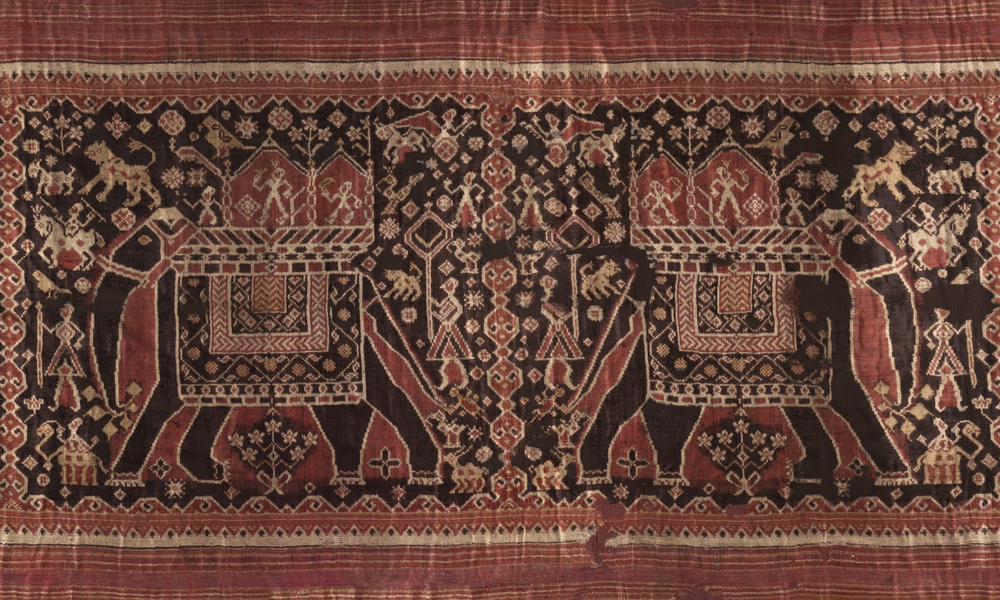
Patolu with design of four large elephants (detail), 19th century or earlier, India, Gujarat, made for the Indonesian market. Silk, double-ikat, resist-dyed, 1.02 x 3.95 m. Collection of Banoo and Jeevak Parpia.
Presentations will be delivered by Ruth Barnes, the Thomas Jaffe Curator of Indo-Pacific Art, Yale University Art Gallery; Kaja McGowan, Associate Professor, Department of the History of Art and Visual Studies, Cornell University; Cynthia Cort, independent textile historian and retired librarian, Denison University; Alexandra Dalferro, PhD student, Socio-Cultural Anthropology, Cornell University; and Sylvia Houghteling, Assistant Professor of the History of Art, Bryn Mawr College; with moderators Nancy Um (Professor and Chair, Art History, Binghamton University) and Durba Ghosh (Professor, Department of History, Cornell University).
Registration is free; contact Elizabeth Saggese at eas8@cornell.edu or 607 254-4642 to reserve a space by Friday, April 12.
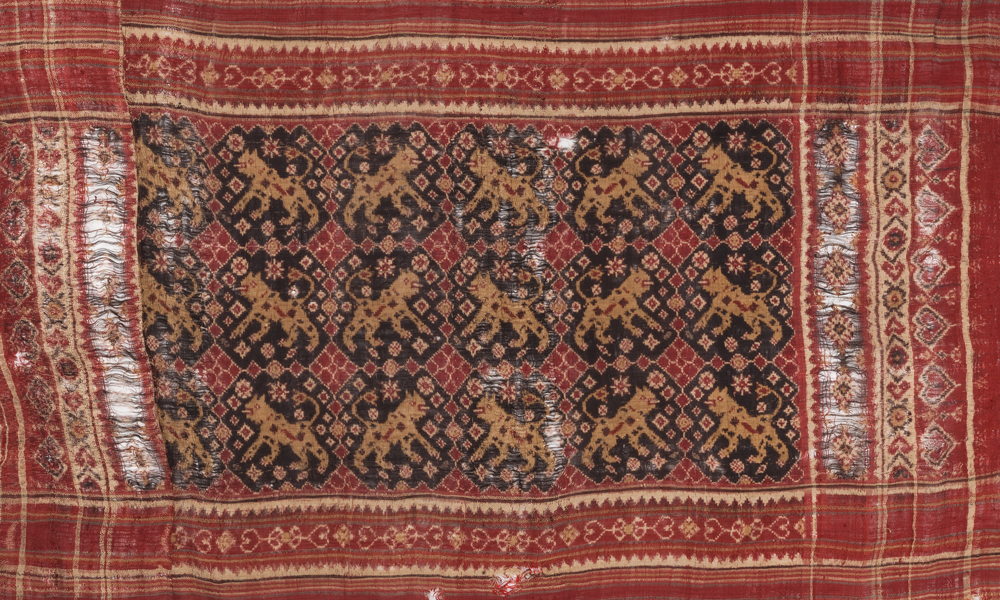
Patolu ceremonial cloth with design of tigers (detail), 19th century, India, Gujarat, made for the Indonesian market. Silk, double-ikat, resist-dyed, 0.78 x 1.47 m. Collection of Banoo and Jeevak Parpia.
The symposium keynote lecture by Susan S. Bean on Thursday 18 April is free and open to the public, no registration required. Bean is the chair of the Art & Archaeology Center of the American Institute of Indian Studies and an associate of the Peabody Museum at Harvard University. She was senior curator for South Asian and Korean art at the Peabody Essex Museum until her retirement in 2012 and previously taught anthropology at Yale University.
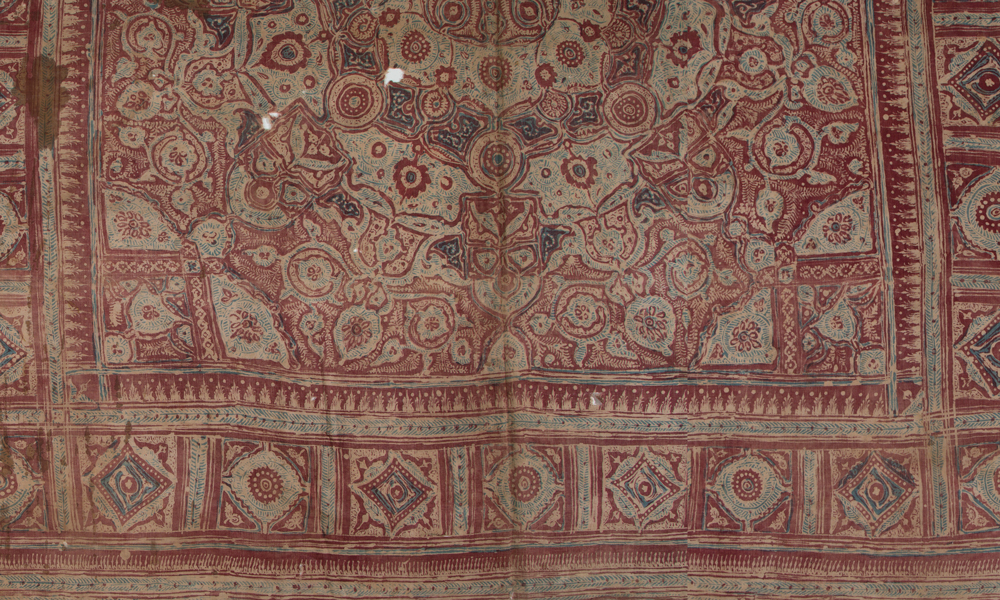
Half of a canopy or wrapping cloth (detail), 15th to 17th century, India, Deccan, made for the Indonesian market. Fine hand-spun cotton (plain weave), hand-painted mordant-dyed and resist-dyed, with hand-applied dye, 0.93 x 2.57 m. Collection of Banoo and Jeevak Parpia.
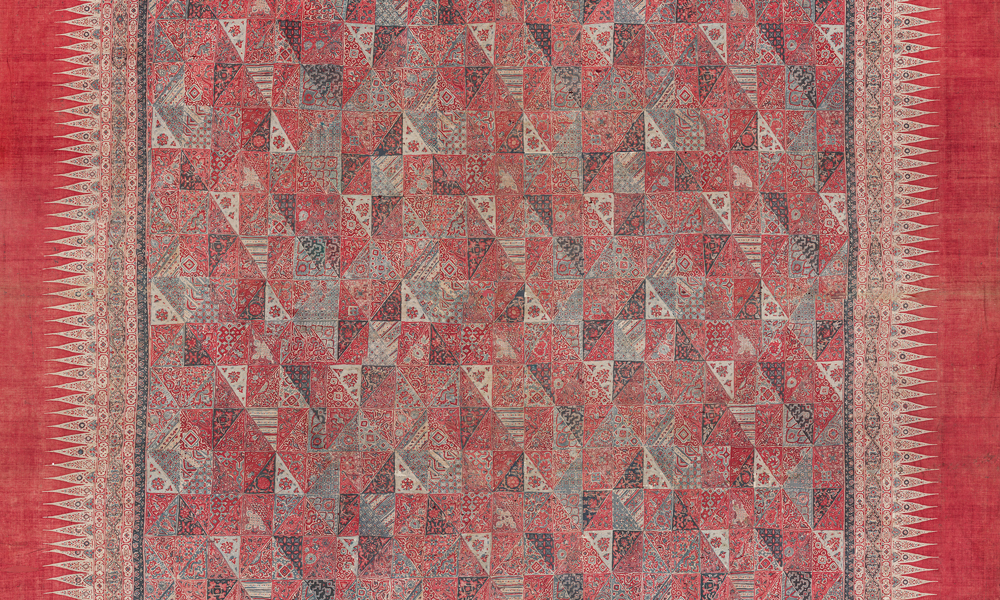
(Java) Canopy or ceremonial hanging with patchwork design (detail), 18th century, India, Coromandel Coast, made for the Indonesian market. Cotton (plain weave), hand-painted mordant-dyed and resist-dyed, with hand-applied dyes, 2.14 x 3.76 m. Collection of Banoo and Jeevak Parpia.
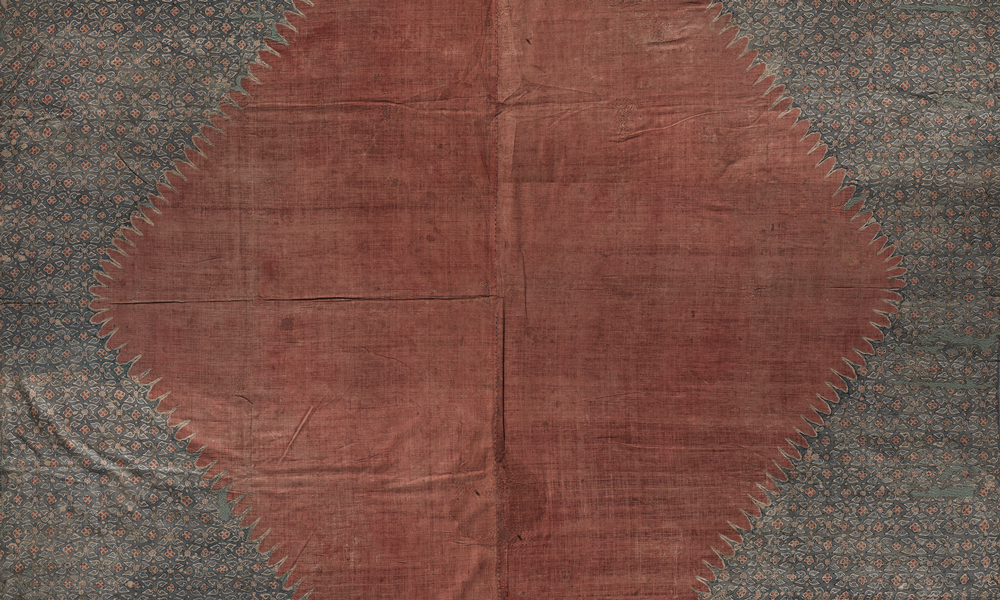
Dodot ceremonial skirt cloth (detail), 18th or 19th century, India, Coromandel Coast, made for the Indonesian market. Cotton (plain weave), hand-painted mordant-dyed and resist-dyed, 3.01 x 2.03 m. Collection of Banoo and Jeevak Parpia.
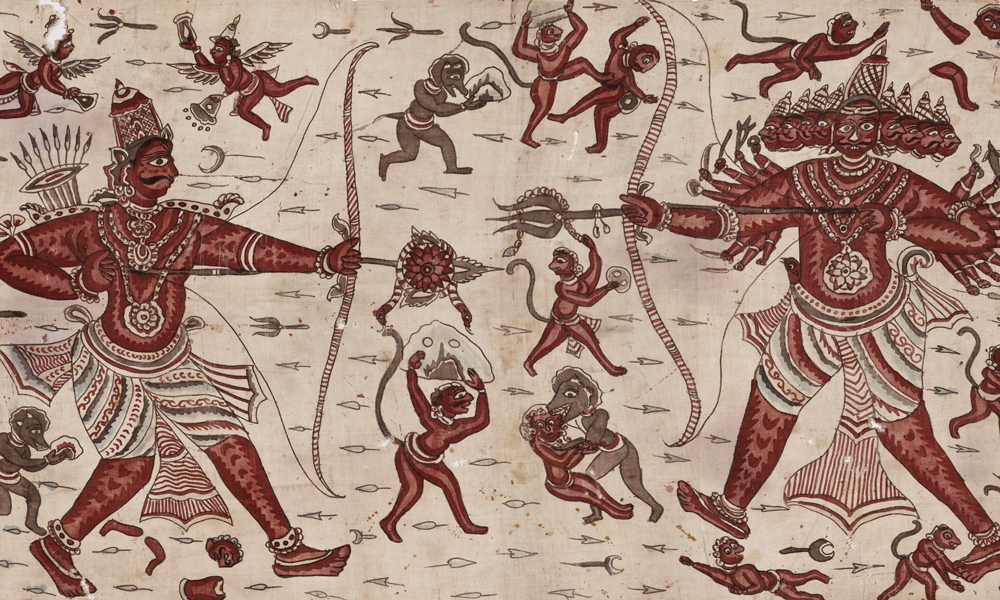
Maa’ ceremonial cloth with battle scene from the Ramayana (detail), 18th century, India, Coromandel Coast, made for the Indonesian market. Cotton, hand-painted mordant-dyed, with hand-applied dye, 0.98 x 4.49 m. Collection of Banoo and Jeevak Parpia.
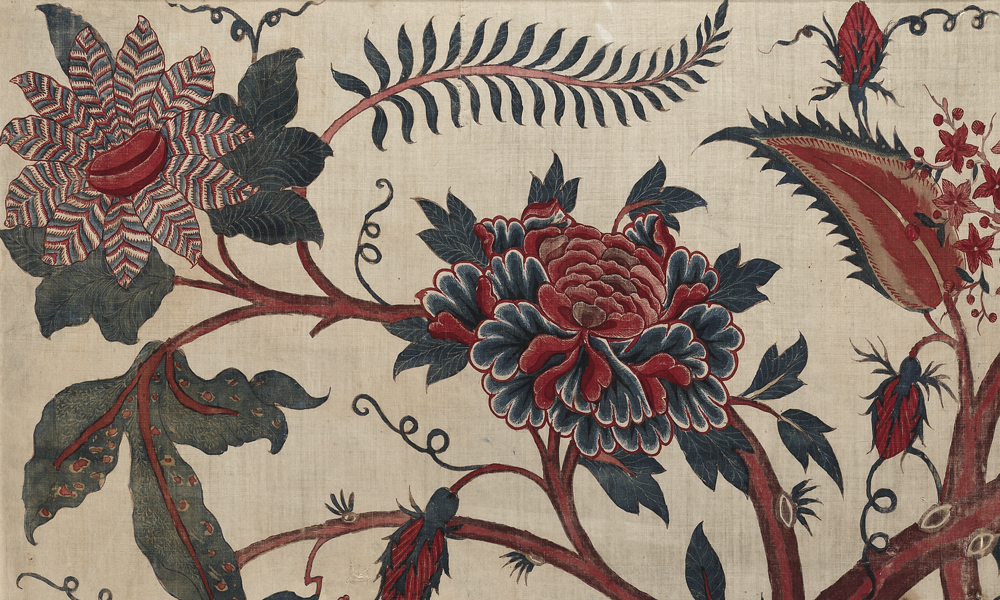
Fragment of a chintz palampore (detail), late 17th or early 18th century, India, Coromandel Coast, made for the European market. Cotton (plain weave), hand-painted mordant-dyed and resist-dyed, and with hand-applied dyes, 1.19 x 0.75 m. Collection of Banoo and Jeevak Parpia.


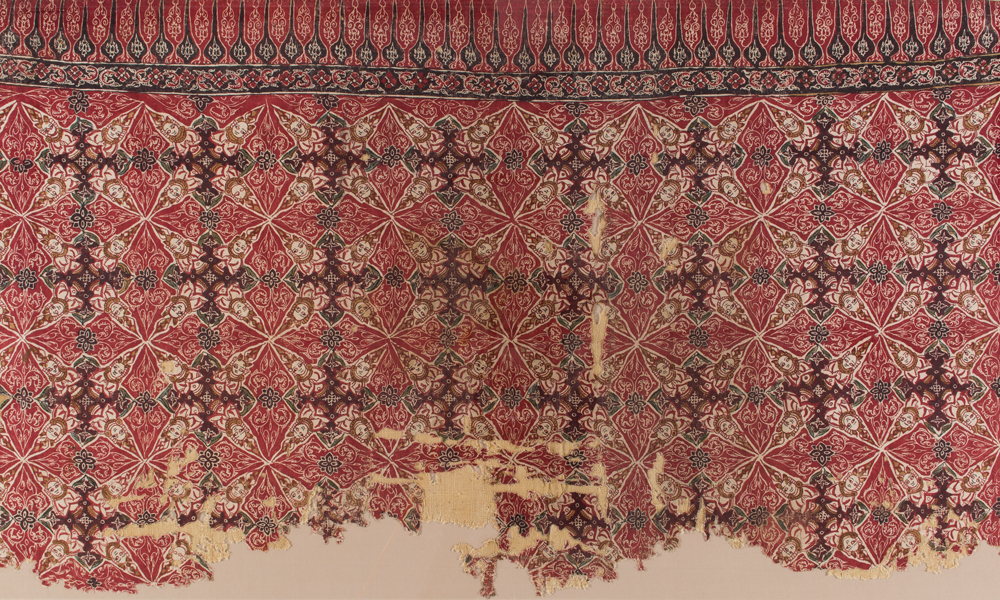

























Comments [0] Sign in to comment